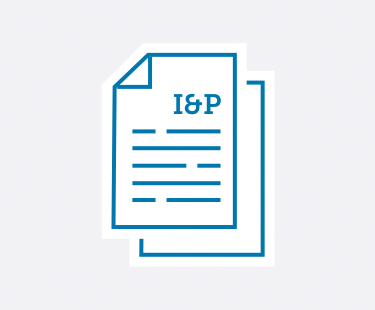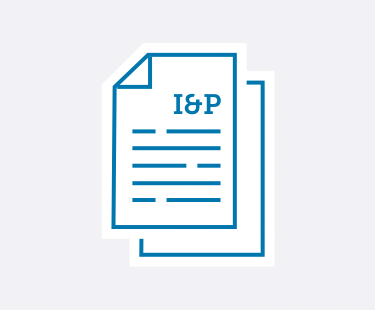

Learn practical strategies to handle emerging trends and leadership challenges in private schools.
No matter if you’re a School Head, Admission Director, Development Director, Board member, or any other private school administrator—Ideas & Perspectives®, ISM’s premier private school publication, has strategic solutions for the pervasive problems you face.
- Tuition not keeping pace with your expenses? In I&P, explore how to use strategic financial planning to create your budget and appropriately adjust your tuition.
- Enrollment dropping off? Discover how to implement the right admission and enrollment management strategies that engage your community—and fill your classrooms.
- Trouble retaining teachers? Learn how you can best support your teachers using ISM’s Comprehensive Faculty Development framework. Your faculty members will become more enthusiastic about their roles—which ultimately improves student outcomes.
- Fundraising campaigns not as successful as you’d hoped? Implement ISM’s practical advice and guidance to build a thriving annual fund, construct an effective capital campaign, and secure major donors—no matter your community size or location.
- Not sure how to provide professional development—for you and your staff? Learn ways to develop and fund a successful professional development strategy. You can improve teacher-centered satisfaction and growth, which in turn strengthens student-centered learning.
- Problematic schedule? You can master the challenges of scheduling with the help of ISM’s practical advice, based on our experience with hundreds of schools and our time-tested theories.
- And so much more.
I&P has shared targeted research, up-to-date insight, and sound theory with school leaders since 1975. More than 8,500 private school decision-makers find the answers to their schools’ administrative and governance matters in our advisory letter. We give you the strategic answers you need.
As an ISM Silver or Gold member, you not only receive issues online and in print 10 times a year, but you have access to 900+ articles in our web archive. Need help? It’s at your fingertips! Learn more and sign up for ISM's membership here.
Search
See the articles from our latest issue of Ideas & Perspectives.
Dealing With Hidden Inflation, 2017
Volume 42 No. 11 // September 5, 2017
As a member of the Board of Trustees, School Head, or Chief Financial Officer, you know that a decision to hold tuition flat for a year results in lost ground and places pressure on future budgets. Inflation quietly depletes your real income. But it’s worse than you think. Many schools use the Urban Consumer Price Index (CPI-U) to determine inflation year-to-year.1 However, the CPI-U does not reflect expenses in private schools, and may not reflect your state’s—or even your city’s—true rate of inflation. For example, the annual rates of inflation in San Francisco, San Diego, New York City, Los Angeles, and Washington DC are typically higher than most other cities in the country. Thus, the CPI-U should only serve as a base figure. There are compelling arguments for adjusting your tuition at a rate above the inflation rate in your school’s particular area.
1. Already a member? Click here to login.
2. Not a member? Click here to become a member.
3. Not sure? We'll help you figure it out.
Setting Your Annual Agenda
Volume 42 No. 11 // September 5, 2017
Setting the annual agendas by the Board President and School Head is a key skill for executing the strategic plan/strategic financial plan. No matter how great the strategic plan and strategic financial plan are, they remain inert and powerless unless they are annually tethered to an actionable process. Using annual agendas turns them into the difference-makers that move the school forward.
1. Already a member? Click here to login.
2. Not a member? Click here to become a member.
3. Not sure? We'll help you figure it out.
Healthy Learning Environments for Students
Volume 42 No. 11 // September 5, 2017
As Facilities Director, Business Manager, or Chair of the Building and Grounds Committee in a school that includes young children, your role has changed dramatically over the past decade. You must consider not just the safety and prestige of your buildings, but also its ability to support and impact student learning. In this article, we explore research indicating what effective buildings can do to improve learning environments. This is not about innovative architecture but about the connection between light, sound, temperature, etc., and learning, what is known as internal environmental quality (IEQ).
1. Already a member? Click here to login.
2. Not a member? Click here to become a member.
3. Not sure? We'll help you figure it out.
Well-Being, Executive Leadership, and School Performance
Volume 42 No. 10 // August 14, 2017
Research and experience has led ISM to hypothesize that the School Head’s well-being significantly relates to school outcomes. ISM recently conducted a study of School Heads to extend our knowledge of executive leadership and investigate the relationship among our Tier 1 markers of the ISM Stability Markers®, School Heads’ characteristics and experience, and their well-being. In upcoming I&P issues, we will publish the more nuanced results of this study. The purpose of this article is to re-introduce our approach to the measurement of executive leadership and describe the general results and conclusions. Great leaders can transform a school and take it to new heights, whereas poor leaders can cause great challenges for schools. We have long asserted that, as the executive leader, your “style” does not seem to account for the differences in organizational performance. Nonetheless, you are a critical component of a school’s ability to deliver its mission with excellence. If it is not style, then what are the critical aspects of executive leaders that separate the best leaders from the rest?
1. Already a member? Click here to login.
2. Not a member? Click here to become a member.
3. Not sure? We'll help you figure it out.
The Admission Office’s Role in Supporting a Culture of Philanthropy
Volume 42 No. 10 // August 14, 2017
As Admission Director, you are an expert at building relationships and cultivating enthusiasm about the educational opportunities your school offers for each child and family. While some admission professionals use the initial prospective family conversation to promote enthusiasm for the school’s philanthropic endeavors—some do not. Some actively resist any notion of addressing the school’s philanthropic pursuits during the admission cultivation experience, fearing the prospective family will lose interest in pursuing enrollment. In fact, the opposite is true. Families appreciate being fully informed about the mission trajectory of the school—and actively seek an accurate expression of costs, expectations, and community responsibilities.
1. Already a member? Click here to login.
2. Not a member? Click here to become a member.
3. Not sure? We'll help you figure it out.
Re-evaluate Your School’s Engagement With Alumni
Volume 42 No. 10 // August 14, 2017
ISM has consistently applauded schools’ efforts to continue to connect with students once they have graduated or left the school. While ISM has been skeptical about the willingness of alumni to give to their pre-collegiate institutions, that situation seems to be changing. Indeed, day schools are joining boarding schools in carefully cultivating and engaging their alumni.The result is willingness for alumni to volunteer, assist current students with networking opportunities and a marked increase in giving from this important constituent group.
1. Already a member? Click here to login.
2. Not a member? Click here to become a member.
3. Not sure? We'll help you figure it out.
Streamline Your Housekeeping Services
Volume 42 No. 9 // July 20, 2017
As Business Manager or Facilities Manager, you know that providing housekeeping services is not just about “cleaning.” It’s about how people are motivated to serve “customers.” The challenge for administrators is to provide consistent and continuing leadership to these employees, enabling them to deliver excellent service daily, while keeping an eye on the bottom line. If no one has communicated your housekeeping standards, this often creates confusion and misunderstanding among both your housekeeping staff and their “customers”—your school’s Board, faculty and staff, parents, and students.
1. Already a member? Click here to login.
2. Not a member? Click here to become a member.
3. Not sure? We'll help you figure it out.
InStability Markers
Volume 42 No. 9 // July 20, 2017
ISM periodically re-analyzes, reconfigures, and updates its list of Stability Markers. The ISM Stability Markers® are in continual and widespread use in the private-independent school world as reliable guideposts in strategic planning and strategic financial planning. As Board President or School Head, you may find it helpful to consider the Stability Markers’ opposite extremes—private-independent school practices that, from ISM’s perspective, are likely to contribute to “strategic instability.” This article may be especially useful in teaching situations, such as in your annual new-Trustee orientation or in presentations to constituents outside the Board and senior administration.
1. Already a member? Click here to login.
2. Not a member? Click here to become a member.
3. Not sure? We'll help you figure it out.
Essential Expectations of Senior Administrators
Volume 42 No. 9 // July 20, 2017
In a previous article, we listed observable behaviors that collectively form an action premise from which each Headship develops. In this article, we consider the senior administrator position—those who report directly to the Head and collectively form the Leadership Team. The essential expectations list is one of two criteria for administrator evaluation. The other criteria are objectives created from the annual administrative agenda. This agenda’s objectives change each year as the strategic needs of the school continue to evolve, as articulated through the Board’s strategic plan/strategic financial plan. The essential expectations, on the other hand, are a constant reflecting the observable behaviors that the School Head expects each member the Leadership Team to exhibit and the Head evaluates.
1. Already a member? Click here to login.
2. Not a member? Click here to become a member.
3. Not sure? We'll help you figure it out.
The Toxic Teacher: An Unfortunate Journey
Volume 42 No. 8 // June 26, 2017
In a previous article, we identified the way in which administrators could use predictability and supportiveness to impact their school’s faculty culture, and provide a framework within which to identify a toxic teacher and move the individual away from the center of that culture. In this article, we imagine what that teacher’s journey was like in becoming toxic, and suggest ways in which teachers can find fulfillment over a career of teaching.
1. Already a member? Click here to login.
2. Not a member? Click here to become a member.
3. Not sure? We'll help you figure it out.


